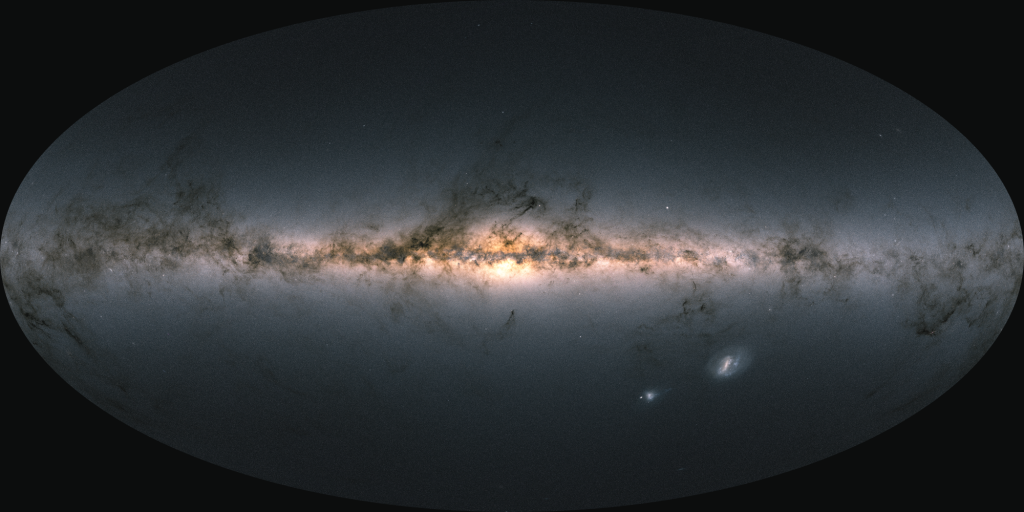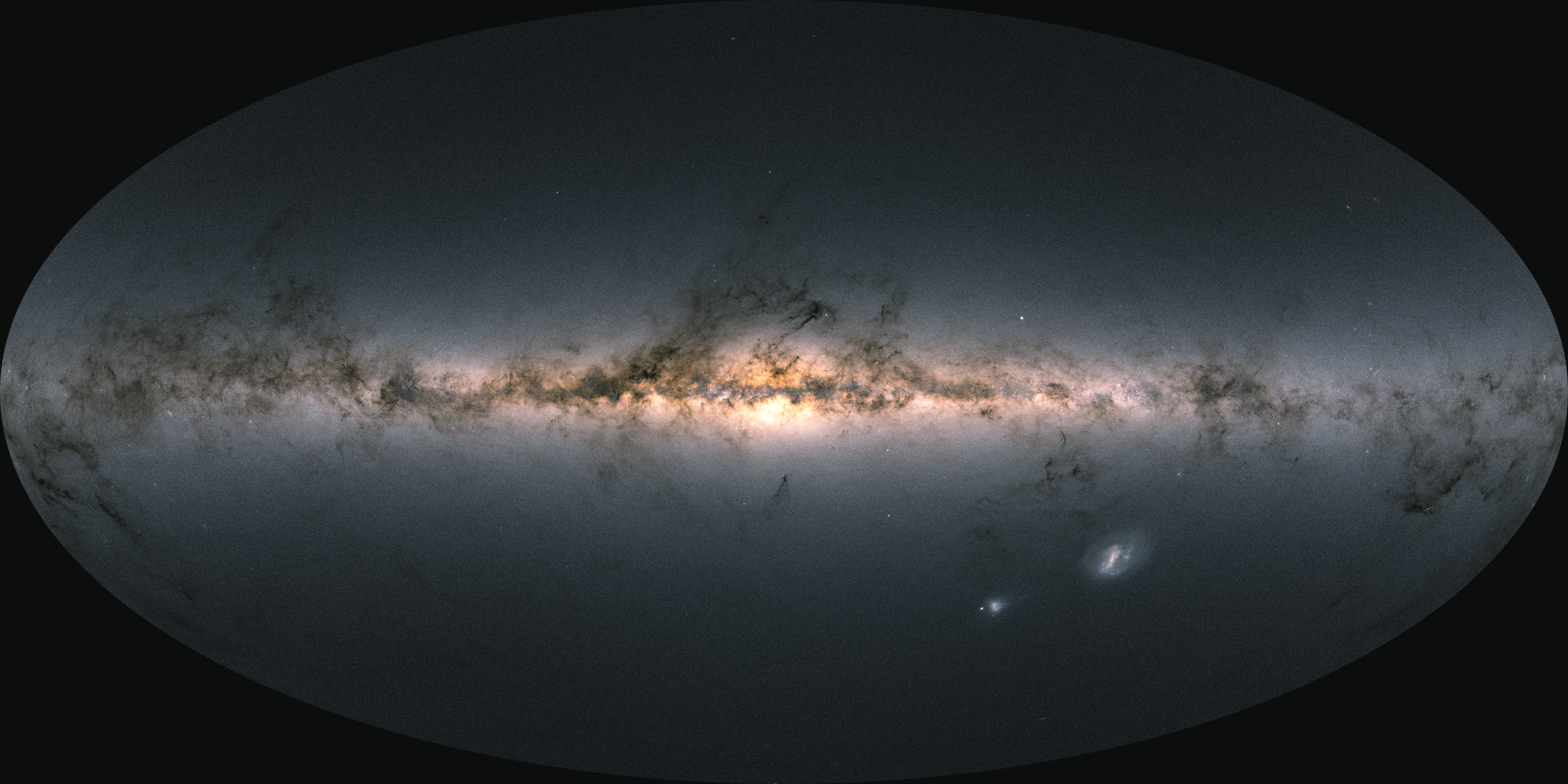The map of our Galaxy keeps getting better

The colour of the sky from Gaia’s Early Data Release 3. Credit: ESA/Gaia/DPAC; CC BY-SA 3.0 IGO. Acknowledgement: A. Moitinho.
On 3 December 2020, ESA makes public the newest map of our Galaxy. It is based on almost three years of observations collected by the Gaia satellite.
This Early Data Release 3 (EDR3) contains the highly accurate position and brightness of a staggering 1.8 billion stars. It includes stars that are a million times fainter than what can be seen with the naked eye.
For most of these stars, EDR3 also provides distances and apparent motion in the sky. These have considerably improved in accuracy compared to the previous data release (Gaia DR2), which makes them highly exciting for understanding the dynamics of our Galaxy.
EDR3 is the precursor to the full “Data Release 3″ (DR3). Astronomers at the Royal Observatory of Belgium are currently contributing to the work on this full release, which is expected to become public in the first half of 2022.
As the Gaia satellite continues observing, they will continue analyzing the huge amount of data, together with colleagues at Belgian universities and European institutes.
All this work will lead to more future data releases, which will even further increase our understanding of our Galaxy and our Solar System.
The Belgian participation to the Gaia mission has been made possible through funding provided by the Belgian Federal Science Policy Office (BELSPO) via the PRODEX Programme of ESA.
More info: https://www.cosmos.esa.int/web/gaia/early-data-release-3
The Gaia EDR3 archive is open to everyone: https://gea.esac.esa.int/archive/

